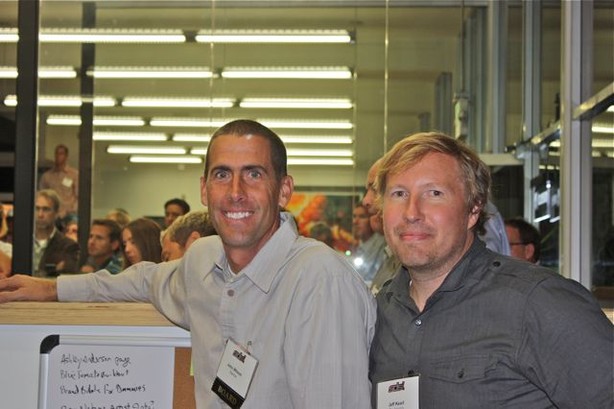Some young action sports companies and angel, venture capital and private equity investors gathered at Skullcandy’s San Clemente offices Thursday night for a San Diego Sport Innovators event with a different twist.
Previously, SDSI events have featured young companies pitching investors with the hope of landing some money.
But after the last event, SDSI Advisory Board Member Jeff Kearl, CEO of Stance and Chairman of Skullcandy, learned that the companies that presented had not secured any funds from the meeting.
So this time, SDSI invited money folks that have invested in the space to talk to others in the investor community about what to look for in action sports companies and how the space is different from other industries, such as the tech world.
The panel included Lewis (Lee) Bird, founder of Bridgetown Capital Partners, who previously worked as president of the Nike Affiliate Group (which includes Hurley and Converse); Aaron DeRose of Mercato Partners, an investor in Stance and Skullcandy; Brian O’Malley of Battery Ventures, also a Skullcandy investor; and Stewart Roberts, president of Tech Coast Angels’ Orange County Network.
Tony Hawk also spoke about the evolution of his business ventures and his business approach in a Q & A session with SDSI Executive Chairman Bill Walton. We’ll post video of Tony’s comments – which were very interesting – later this afternoon.
Bill has brought some star power to SDSI, and has recruited new advisory board members such as Jeff Kearl, John Wilson, Kevin Flanagan and Dave Nash. Other board members include PT Townend, Mark Schmid, Tony Finn, Ludo Boinnard and more.
In his opening remarks, Bill said SDSI wants to create an investor pool for the space so when companies are ready, there is a team ready to invest. The group also hopes larger brands in the industry get involved in investing in smaller companies, which is what happens in Silicon Valley, Jeff Kearl said.
Here are a few interesting tidbits from the panel discussion when the group talked about what they look for in young companies.
See Page 2 for more
Lee Bird, Bridgetown Capital Partners
– He looks for authenticity and brands that kids are talking about it.
– With social media, brand awareness can grow quickly these days.
– While his firm usually invests in companies at $40 million and beyond, Lee personally is an angel investor in Filtrate Eyewear, a price-point sunglass line from Australia, and Jedidiah Clothing.
– When asked about the future of the space, Lee said it’s no longer about action sports, it’s about youth culture. If the brands continue to evolve and be rooted around music, art, sports and fashion, the space will grow. If not, it may fade, he said.
Brian O’Malley, Battery Ventures
– He looks for companies with leaders who are passionate about their brand and will run through walls to make things happen.
– He also likes to work with people who know what they don’t know, instead of those who think they have all the answers. Having a willingness to listen to advice is key.
– To meet investors, try to find a friendly introduction by someone you know or send blind emails. But make sure the emails are written intelligently – look at the investments that person has made and make analogies to what you are doing.
Aaron DeRose, Mercato Partners
– Most investors in the space buy into brands, more than products
– The most successful new companies begin with a host of relationships and can solicit feedback before they create and launch a product.
– The demise of ASR came up, and Aaron said the traditional traded show model is dead. “Agenda has proven to be a better model,” he said, and is more entrepreneurial.
Stewart Roberts, Tech Coast Angels’ Orange County Network
– The best time to talk to potential advisors is when you don’t need money. Start conversations early, build up an advisory board, convey your enthusiasm, seek advice.






